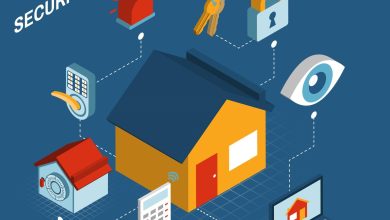Common Plumbing Problems and How to Address Them: A DIY Guide for Homeowners

Introduction
Plumbing issues are inevitable for homeowners, but knowing how to address them promptly can save time, money, and frustration. From leaky faucets to clogged drains, understanding common Plumbers problems and how to troubleshoot them can empower homeowners to tackle minor repairs and prevent larger issues from developing. In this comprehensive DIY guide, we’ll explore some of the most common plumbing problems encountered by homeowners and provide step-by-step instructions on how to address them effectively.
Leaky Faucets
Leaky faucets are one of the most common plumbing problems homeowners face, and they can waste a significant amount of water if left unaddressed. The most likely culprit for a leaky faucet is a worn-out or damaged rubber washer or O-ring inside the faucet assembly.
To fix a leaky faucet
- Turn off the water supply to the faucet.
- Remove the decorative cap or handle to access the faucet assembly.
- Use a wrench to loosen and remove the packing nut or retaining screw.
- Remove the faucet stem or cartridge assembly.
- Inspect the rubber washer or O-ring for signs of wear or damage.
- Replace the washer or O-ring with a new one of the same size and type.
- Reassemble the faucet, ensuring all components are properly aligned and tightened.
- Turn the water supply back on and test the faucet for leaks.
Clogged Drains
Clogged drains are another common plumbing issue that can occur in sinks, showers, tubs, and toilets. Hair, soap scum, food particles, and other debris can accumulate over time, obstructing the flow of water and causing backups and slow drainage.
To unclog a drain
- Start by using a plunger to attempt to dislodge the blockage. Place the plunger over the drain opening and apply firm, rhythmic pressure to create suction.
- If plunging doesn’t work, try using a drain snake or auger to break up and remove the clog. Insert the snake into the drain and rotate it clockwise while pushing it further into the pipe. Continue until you encounter resistance or break through the clog.
- For stubborn clogs, you may need to use a chemical drain cleaner. Follow the manufacturer’s instructions carefully, as these products can be hazardous if used incorrectly.
- After clearing the clog, run hot water down the drain to flush out any remaining debris and ensure proper drainage.
Running Toilets
A running toilet is not only annoying but can also waste a significant amount of water if not addressed promptly. The most common cause of a running toilet is a faulty flapper valve or flush valve seal that allows water to leak from the tank into the bowl.
To fix a running toilet
- Remove the tank lid and inspect the flapper valve and flush valve seal for signs of wear or damage.
- If the flapper valve or flush valve seal is damaged, replace it with a new one of the same size and type.
- Adjust the chain or linkage connecting the flapper valve to the flush handle to ensure proper seating and operation.
- Check the water level in the tank to ensure it is at the recommended level. Adjust the float arm or float cup as needed to achieve the correct water level.
- If the problem persists, it may be due to a faulty fill valve or overflow tube. In this case, it may be necessary to replace the entire flush valve assembly.
Low Water Pressure
Low water pressure can be frustrating when trying to use faucets, showers, or appliances. Common causes of low water pressure include mineral buildup in pipes, a partially closed shut-off valve, or a faulty pressure regulator.
To improve water pressure
- Check all faucets and fixtures in the house to determine if the low water pressure is isolated to a specific area or affecting the entire house.
- Inspect the shut-off valves near the affected fixtures to ensure they are fully open. If a valve is partially closed, open it fully to restore water flow.
- Clean or replace faucet aerators and showerheads to remove mineral buildup and improve water flow.
- If low water pressure persists, check the pressure regulator located near the main water supply line. Adjust or replace the pressure regulator as needed to achieve the desired water pressure.
Water Heater Issues
Water heaters are essential for providing hot water for bathing, cooking, and cleaning, but they can experience issues over time. Common water heater problems include insufficient hot water, strange noises, and leaks.
To troubleshoot water heater issues
- Check the thermostat settings on the water heater to ensure they are set to the desired temperature.
- Inspect the heating elements or burner assembly for signs of damage or corrosion. Replace any faulty components as needed.
- Flush the water heater tank to remove sediment buildup and improve heating efficiency. Follow the manufacturer’s instructions for draining and flushing the tank.
- Check for leaks around the water heater tank, fittings, and connections. Tighten any loose connections or replace damaged components to prevent water damage.
Conclusion
By understanding and addressing common Plumbers problems, homeowners can save time and money on repairs while maintaining the functionality and efficiency of their plumbing systems. Whether it’s fixing a leaky faucet, unclogging a drain, troubleshooting a running toilet, improving water pressure, or addressing water heater issues, many plumbing problems can be resolved with basic DIY techniques and tools. However, if you encounter a plumbing issue that you’re not comfortable fixing yourself or if the problem persists despite your efforts, don’t hesitate to contact a licensed plumber for professional assistance. With the right knowledge and resources, homeowners can tackle common plumbing problems effectively and ensure the long-term integrity and performance of their plumbing systems.




